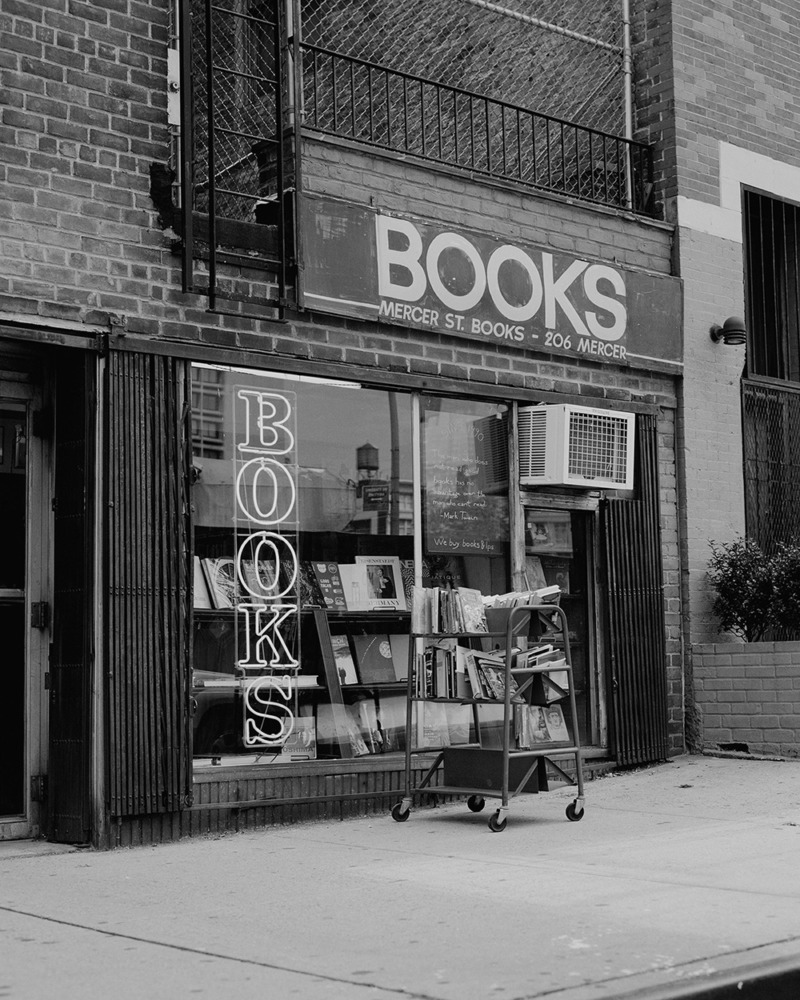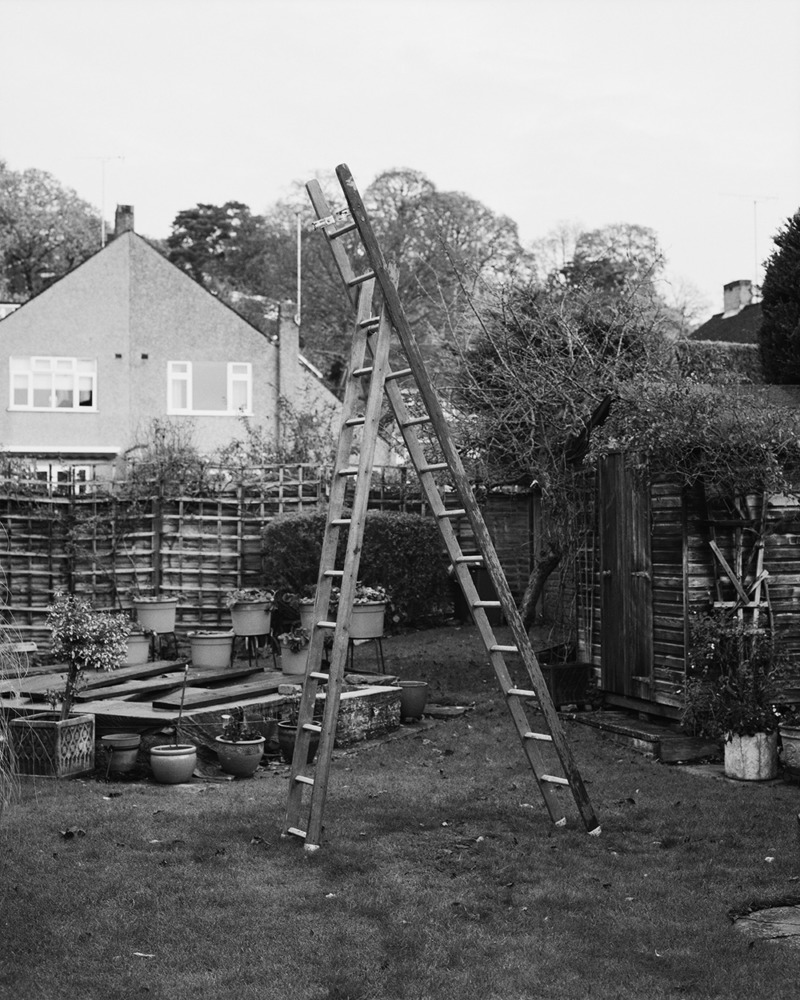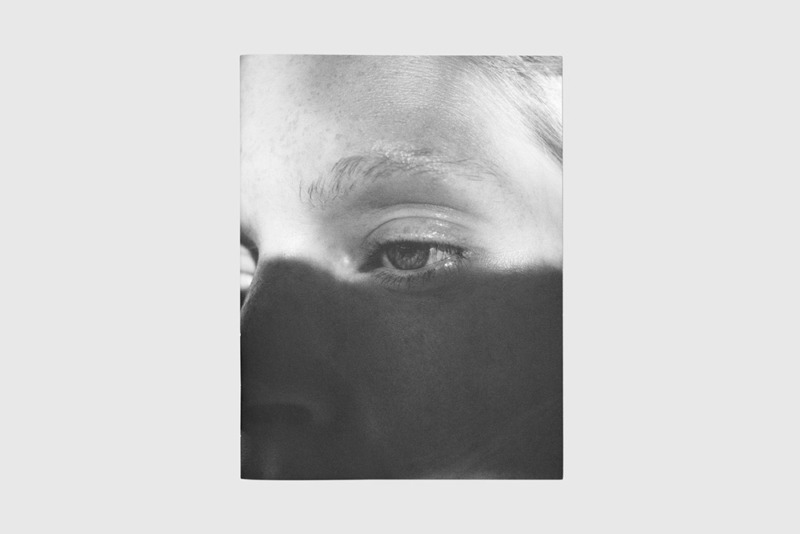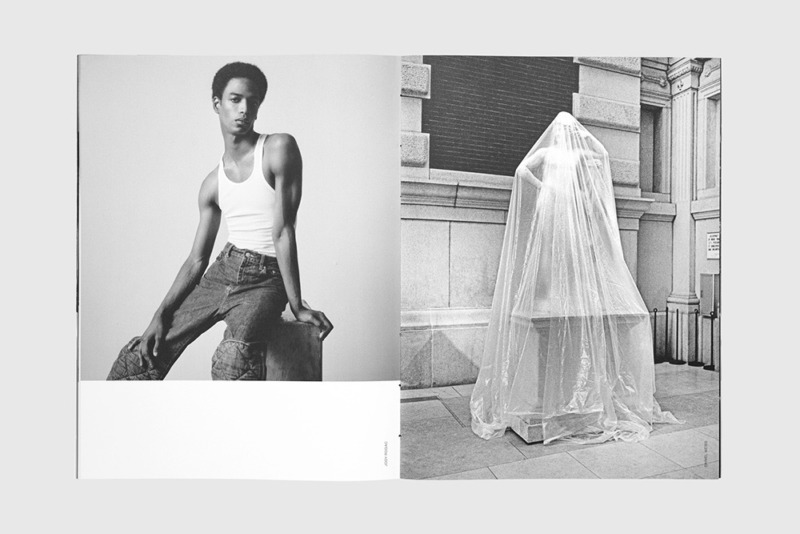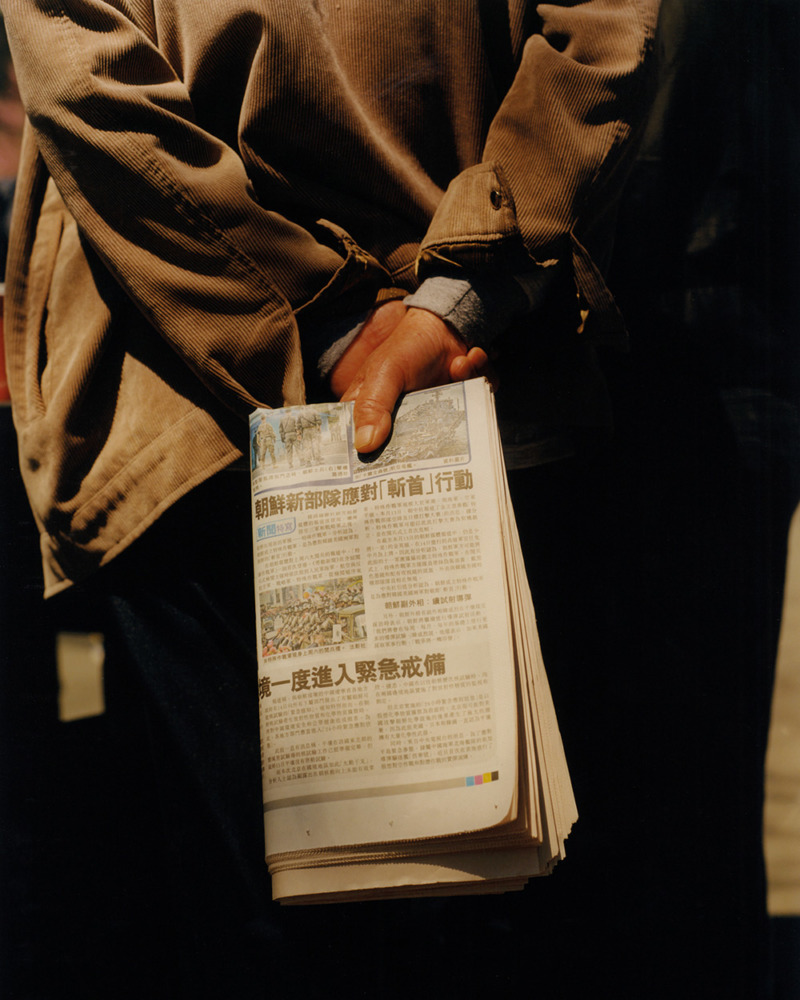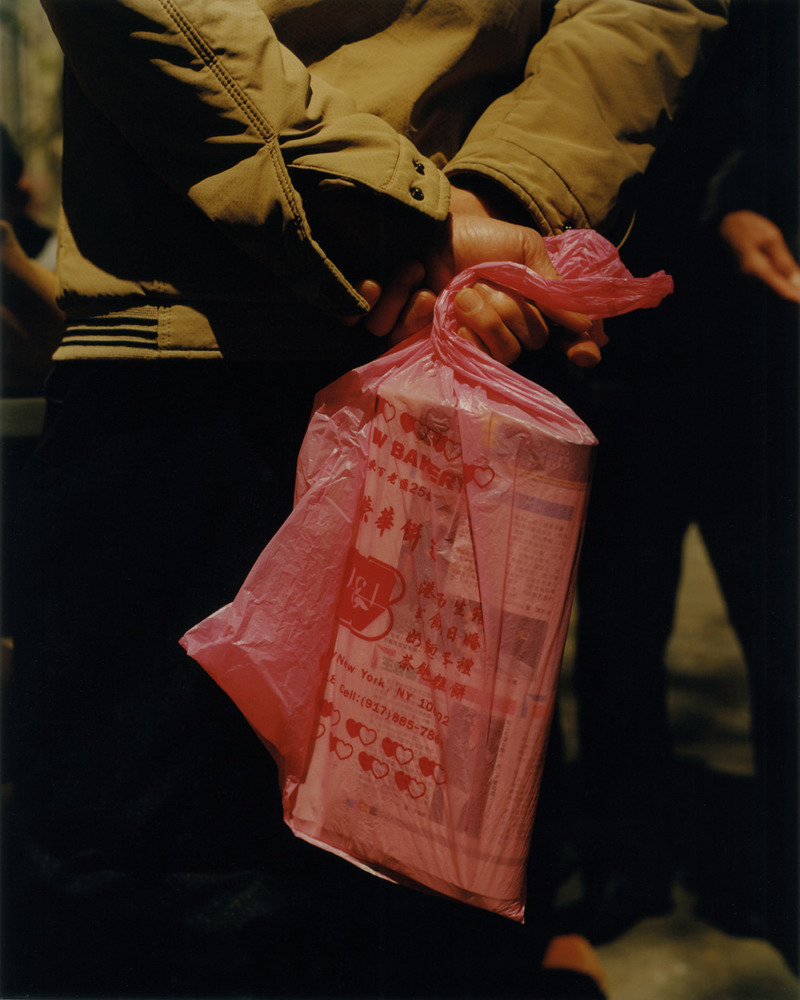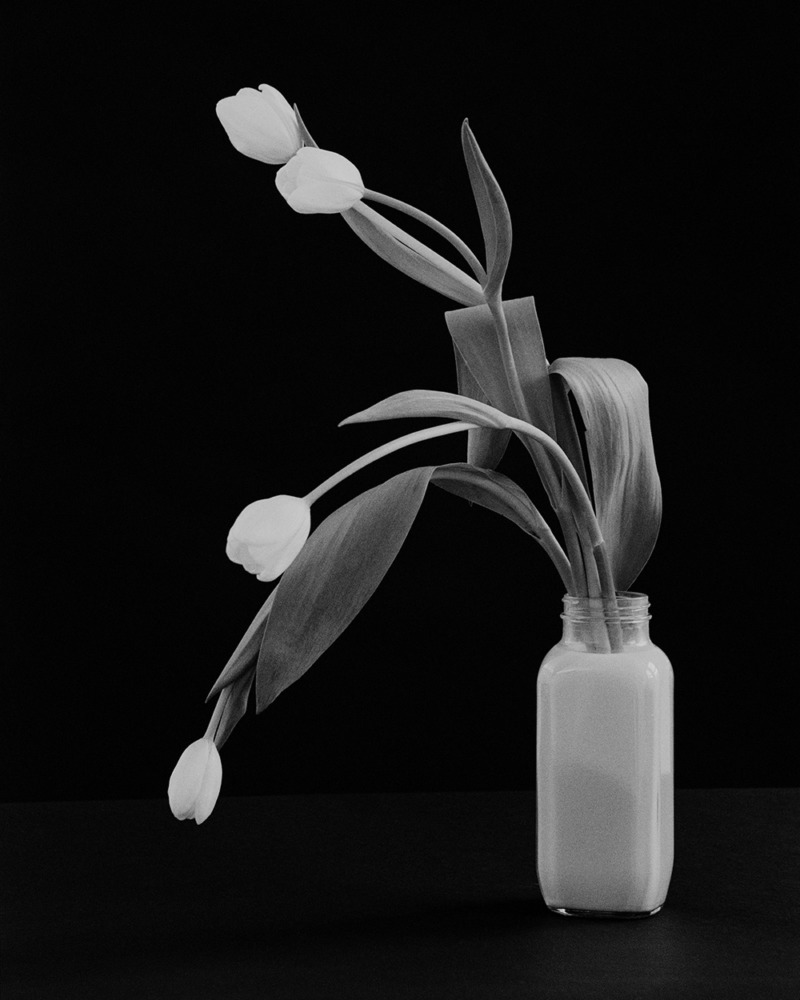In Conversation – Sarah Pannell and Brian Kanagaki
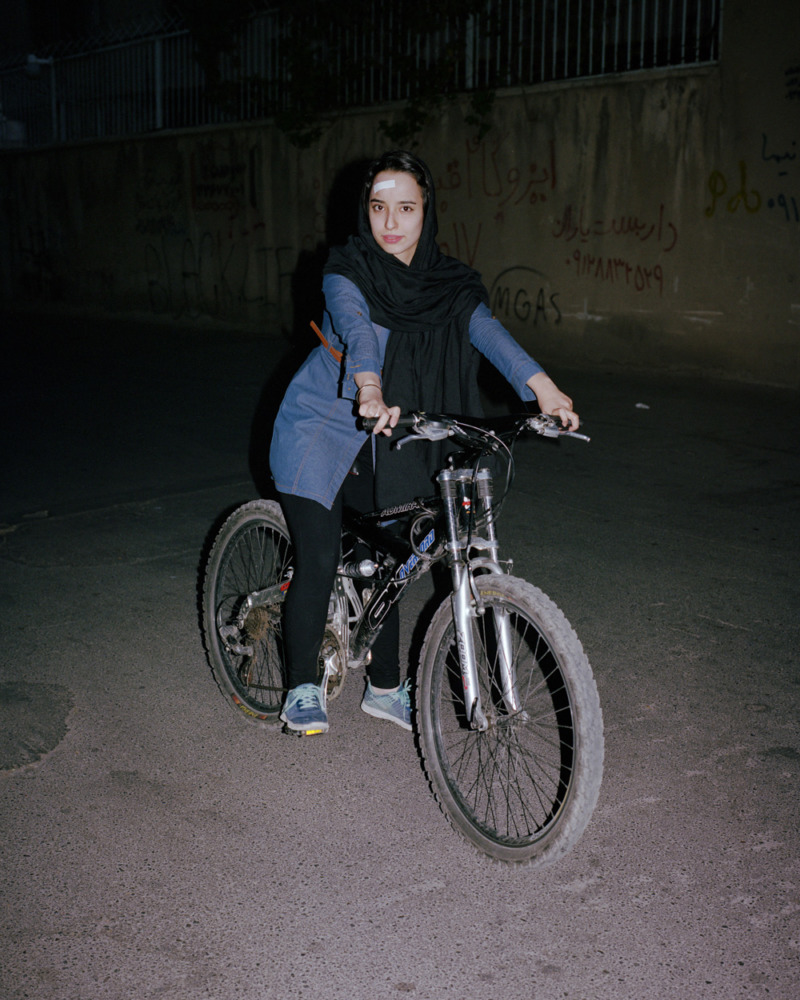
Sarah Pannell from her forthcoming photobook Tabriz to Shiraz (Perimeter Editions/Hillvale) 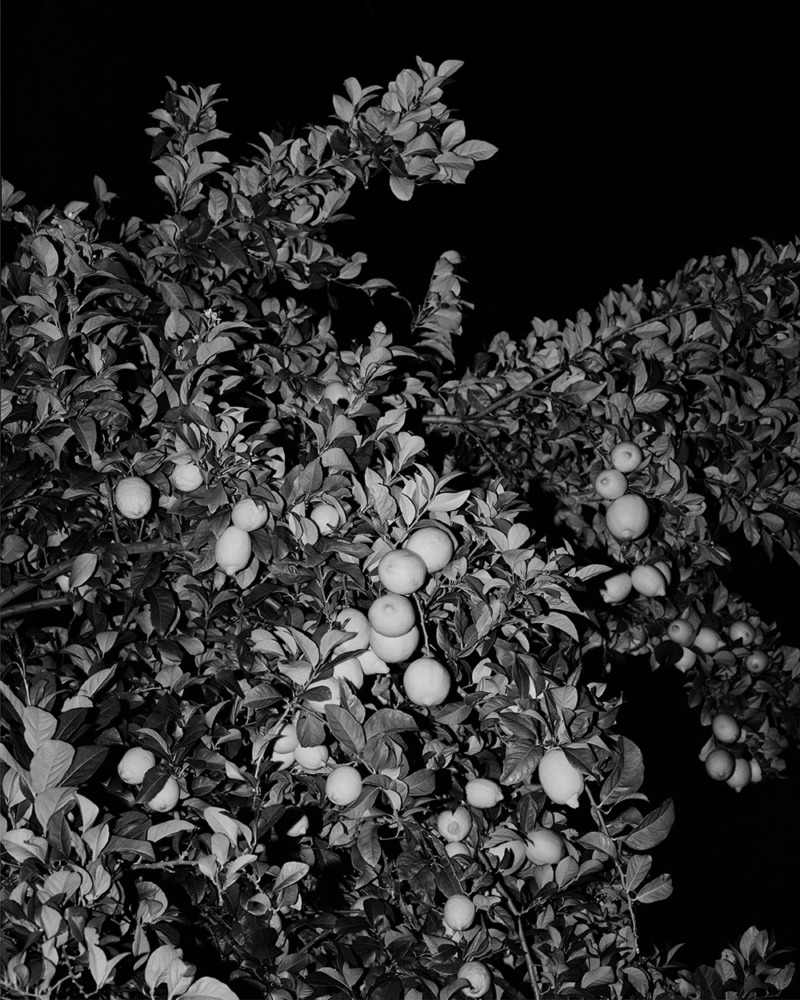
Brian Kanagaki, Golden Persimmons II (Palm* Studios, 2018)
Brian Kanagaki (BK) – With you being located in Australia, it brings up one of the main questions I wanted to ask you. Do you feel that being in Australia, an island away from everything else, inspires you to travel for your photography practice? Do you think that being geographically isolated makes you want to leave Australia to create work?
Sarah Pannell (SP) – This is something I’ve been grappling with for some time now. I’ve been torn between the opportunity to document the stories of the country I grew up in, as a physically isolated country. I’m aware of the abundance of interesting narratives available to me, and there’s always been this internal pressure to document my own backyard; (excuse the cliche).
However, ever since I can remember, I’ve been obsessed with travel and the idea of getting myself to foreign places, this certainly is a fantasy that was heavily influenced by my grandparents who travelled a lot throughout their lives, as well as my mother who travelled from a young age. My motivation centres around offering an alternate visual perspective on places that have historically been misunderstood or misrepresented by western audiences – and trying to challenge people’s existing understanding of certain communities or cultures.
BK – Is that why you chose to go to Iran for your latest book project?
SP – Yes, one of the reasons. Since I began my project in Iran, I remain anchored back to Australia and developing a way to create work at home which parallels the Iran body of work.
BK – It’s interesting because even though you were drawn away from where you’re from, you still had the support of the Australian community behind you including Perimeter Books, which is easily the best photo book store in Australia, as well as The Heavy Collective and Hillvale. Do you think having that community really helped to push you forward?
SP – Absolutely, Hillvale has been instrumental within the photography community in Melbourne. I met Andy and Jason who run Hillvale about 5 years ago. It started out as an independent photo lab but has grown to include a gallery and now a publishing project. They launched this Project Grant in the last year or two where they supported me and another photographer Ryan Cookson in completing an existing photo project. With that funding support, I was able to return to Iran to continue shooting, which means so much as its work that had set out to do on my own in 2016. Now my upcoming publication, Tabriz to Shiraz is co-published by Perimeter Books and Hillvale which is really exciting and designed by London based Daly & Lyon.

Sarah Pannell, from the series
Grand Plans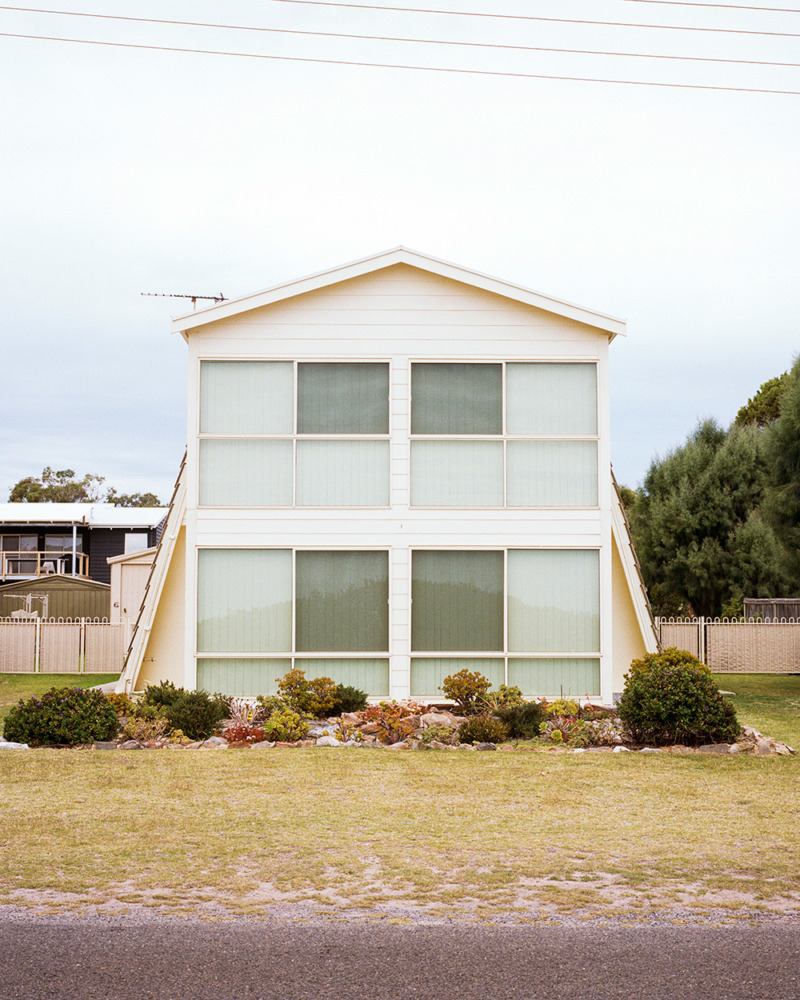
Sarah Pannell, from the series
Fresh Coat
I’m definitely not finished with my interest in Iran and I still have this long-term project that will continue to evolve. I’m heading back later this year, in fact. I’ve self-published a few books and zines in the past but it’s really nice to have a publication like this coming out, with the support of Perimeter who have such a great reputation within the art-book world. You’ve published quite a few books so you know what it’s like put yourself out there.
BK – I think having a support network is the one thing that makes or breaks you as a creative. It’s an amazing thing to be able to find a group of people that believe in what you’re doing. It really only takes one or two people to help you get to that next level and vouch for you. Since Tabriz to Shiraz is not your first book, do you feel less stressed? From designing books for other artists, I found that people can have certain expectations and a clear vision of what they want to get out of it. Some people are just happy to make a book, even if no one sees it. But at the same time, you invest so much of your time and money into this tangible object that you really hope and want to know that someone’s going to appreciate it.
SP – Having made a few publications in the past, but on a much smaller scale, I know what it feels like to hold something in your hands. I would love to say that I don’t feel the pressure but I definitely feel the same stress because it’s something that’s really close to my heart, and work that I’m really proud of so it’s just that daunting feeling of putting out something into the world and hoping that people get something from it.
BK – I remember I did a launch in London for my first book, a city that I’m not from, and I was terrified that no one was going to come and I was going to be in this gallery alone. But then people did show up and I was like, “this is amazing, nobody knows who I am. I’m doing this thing in another country and people like it and care about it.”
SP – Yeah, having a show in a foreign city, as soon as you’re out of your own neighbourhood essentially and you don’t have your own normal units of support, that would be a very daunting feeling I’m sure, but something I haven’t really experienced yet.
BK – I think what you’ve done, going to another country to shoot a project like this, would be extremely daunting. Most of my work is around my neighbourhood or where I have lived for years and feel incredibly comfortable. I have to be able to go back to the same spot over and over and check the lighting to make sure it’s right. It has to be hard to show up at a place that you’ve never been and to jump right in and start making work?
SP – It’s definitely two fold. part of me loves being able to shoot in and around Melbourne with the freedom that comes with being able to walk around any time of day or night and have that comfort but then again, I love the opposite; I remember the first day I arrived in Iran I was questioning myself as I was flying in; I flew in from Europe and most of the incoming flights to Tehran that I could afford, arrive during the night so I arrived at like 2 or 3 a.m. So I was already questioning all my decisions up until that point as there is something about arriving somewhere foreign when it’s dark.
BK – Yeah, you arrive in a strange city and have to get into a taxi or figure out the bus system in the middle of the night.
SP – Yeah arriving at 2 a.m. and standing in a taxi line then finally getting to your accommodation at 6am. I can’t really explain the weird excitement and thrill that I feel when I do that sort of thing. I was super nervous at the same time but as soon as I started looking around and seeing all these things I was just like “Oh yes, I’ve done the right thing, I’m in the right place”. That feeling followed me around the whole month that I was there and then when I returned for another month 6 months later it was just the same all over again but with an extra level of comfort and familiarity. You need to be comfortable (to some extent) where you are and you need to feel safe – as soon as those two elements are taken care of, I really could photograph anywhere, but I understand the privilege that comes with having these options.
Iran is a very different place to Australia, people interact in a different way which I really felt drawn to. Particularly the way Iranian’s welcome you into their home, with very little hesitation. I can’t say I won’t feel any nervousness going back, but that is a natural instinct. I feel so humbled by being able to travel there and be welcomed in by a mix of friends that I’ve made there and then be able to create work that I think demonstrates all the beautiful and strange intricacies and oddities of the Iranian landscape.. of its street life and everyday home life.
The long-term project that I’m working on it’s centred around the concept of Iranian hospitality. Everything that comes with entering someone’s house and being welcomed in for a meal, or just sitting down to have tea or drink and chat. There is a warmth to this that I have only experienced in a few other places in the world. It’s really at odds in a lot of ways, to the culture I grew up in, in Australia and more so, with a lot of the negative and misleading political news coverage we see in the West about Iran.
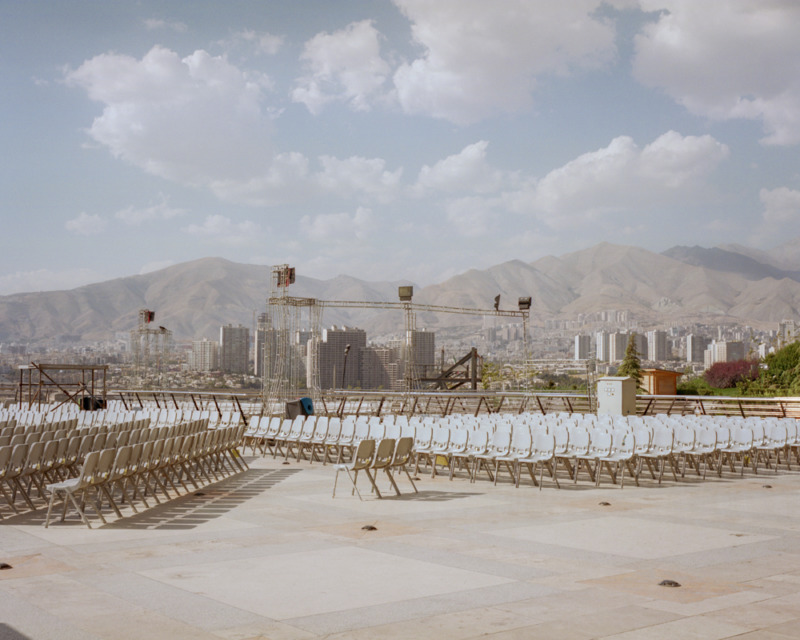
BK – It’s easier to have negative or strong feelings about a place you don’t know anything about or have never been. When you actually go there and see that the people are the same as you and me, it definitely puts things into perspective. I think it’s so easy to stand against something when all you see is negative coverage on the news but these people are real people. I can imagine that going there and seeing it first hand has got to be eye-opening but also very frustrating?
SP – Yeah absolutely. My first trip to Iran in 2016 was one month before the US election – and I guess like in most places, people didn’t actually expect Trump to win. Friends spoke at the time about their concerns for a Trump presidency and the fall out regarding the potential dissolution of the Nuclear Deal struck between Iranian President Rouhani and President Obama. Additional sanctions on Iran which have been brought in since Trump became leader only further adds economic pressure to everyday Iranian’s as their energy and food prices increase and finding skilled employment gets harder. It’s just hard for me to truly understand how the decisions of a foreign government on the other side of the world can directly affect your daily livelihood.
BK – Your work is quite documentary focused, do you see it as a type of reportage or journalism?
SP – When I first started out with photography and studying photography, it was reportage and photojournalism that got me hooked and got me really excited about getting into photography. It’s interesting for me to reflect now on how the way my work has evolved over the years. I feel like I straddle a few different genres, namely documentary and fine art, which I don’t mind. With this latest body of work I did try to branch out a bit more and challenge myself particularly with portraiture but while there may be reportage elements to some images, I wouldn’t categorise myself strictly in that sense.
BK – I think that’s a weird line that photography straddles. There are people that are into it because they have a strong point of view and their work is overtly political, they want to use their work to shine a light on a particular problem or area of the world or something that’s really important to them. I’ve always come from a very different way of thinking – I’m just photographing something that exists. I have a strong viewpoint but there’s nothing political about it because of the subject matter that I choose to photograph. I think it’s something that I always struggle with in my work, the fact that I want to take a beautiful image but there isn’t really a meaningful message behind it and I always wish there were more to it. It’s something that I’m constantly trying to add to and improve on. I don’t know if the two always have to go hand in hand; I don’t know if you always have to be in both worlds; sometimes you can just take a photo that’s pretty.
SP – I think it comes down to whatever you feel comfortable with. I don’t like the idea of feeling the pressure to outline the meaning of every single image that you put out there, but I also really value strong narrative structures within visual storytelling. I was thinking before about your book Golden Persimmons II – and there are some photographs that you don’t need to have any type of explanation. There’s one particular flower vase Still Life, that’s such a strong, beautiful image, it needs no words. I think about this a lot; that is, the ability to talk about one’s work. It’s something I definitely struggle with, evidently as shown through this conversation. ha ha
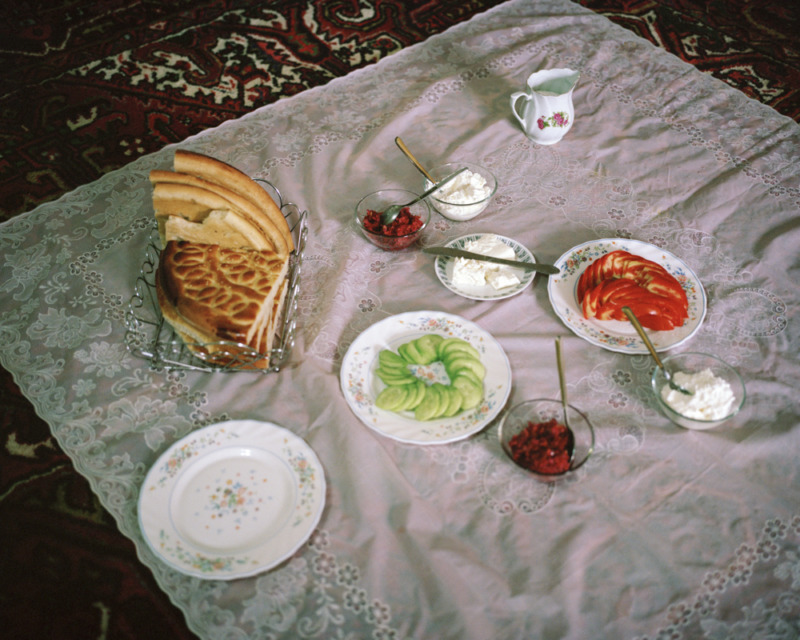
Sarah Pannell from her forthcoming photobook Tabriz to Shiraz (Perimeter Editions/Hillvale) 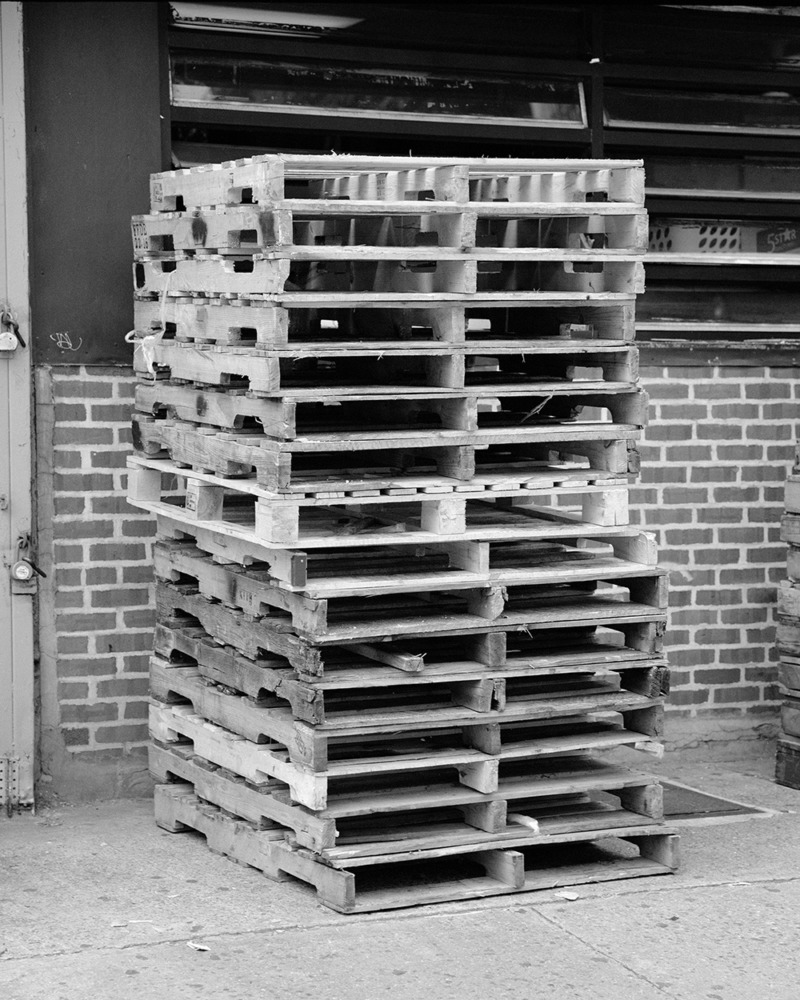
Brian Kanagaki, Golden Persimmons II (Palm* Studios, 2018)
BK – I’m the same way, that’s why I wanted to talk about this with you. Whenever I talk about my work it’s a really quick conversation because it’s like ‘why did you take that picture? What’s the meaning?’; it’s super simple, I thought it looked nice and it’s that easy. I’m sure that there is some meaning behind it, why do I think it looks nice? Why am I drawn to it? But I still haven’t figured that out yet. But that’s what I like about photography, I don’t know what I’m doing and I like not knowing sometimes.
SP – I might come back from a trip and I’ve taken a lot of photos of a particular thing and I’ll go back through them and I’ll be like OK, I knew I was subconsciously drawn to that element for a reason and then I see it dotted throughout my work; that’s when I can comfortably edit and sequence and create some type of narrative that I think will appeal to viewers. I think this particularly applies to elements of humour within my photography and the repetition I often discover in my work, retrospectively.
BK – I think that’s also what I’m really drawn to, the beauty of human nature, how weird and happenstance it all is.
SP – Of course. I find humour in photography can be a difficult space to navigate but if it’s done well, it can have such an impact. This is what initially drew me to street photography when I was just finding my feet taking photos. Its an accessible form of art, in that you can do it on your own and you only need a camera or a smart-phone. Some of my favourite photographers on Instagram are street-based, because they find those hidden (amusing) gems that the majority of people overlook.
BK – Do you know that street photographer from New York called Weegee? I love that when anyone would ask him about how he got his photographs he would say ‘you’ve just got to be there’, it’s as easy as that. I think that’s something I think about all the time, you’re not going to get a great photograph if you’re not out there every day just walking around.
SP – Totally. Obviously, some people have more of a knack than others but it’s a nice concept; just showing up. It takes a lot of patience, and time of course. So changing the subject a little, what are you working on at the moment? I know that you’ve just done a number of Soft Copy launches around the world…
BK – That’s what I’m in Paris for right now. We did a New York launch at Mast Books, and then in Melbourne at Perimeter Books, and now we’re doing one in Paris at Yvon Lambert. This is the last launch for the first issue. My wife Amy and I are working on the second issue right now which is coming out in April. We did the first issue not really knowing how it was going to go or if people were going to like it but it’s worked out really well and we are super happy with how it has been received.
SP – I know you’d said when we met in Melbourne that you had pretty much sold out – you only had a couple of copies with you at Perimeter.
BK – We only printed 300 and I was surprised to have even sold that many. We barely remembered to keep any copies for ourselves.
SP – Do you feel like the next issue is taking much of a different direction?
BK – It will be much the same. There wasn’t a theme for the first one, it just came down to the photographers we contacted and how we edited their work together. That’s the fun of it. It’s like what we were saying earlier, you see these funny happenstance things and it’s the idea that I don’t know what images we are going to receive. It can be pretty risky but I like the idea of people sending us a bunch of work and we go through it and edit it together to find some kind of cohesive narrative. That’s the challenge but also the fun part of it.
SP – I was wondering because of your job and what you do on a day-to-day basis, in terms of designing other people’s books obviously there must be so many takeaways from that in terms of what you can put into your own work. How do you find that helps or hinders your own solo practice? I don’t know if you’re working on a new body of work at the moment or even from just looking at your previous publications, how does that play into your own personal work (not so much Soft Copy)? Are there any negative impacts from designing other people’s work or do you find it hard to find inspiration?
BK – I think the hardest thing is that the photographer themselves have really great expectations of what they want it to be in their head and I think that’s great but it’s also hard because you’re always limited by the budget. You could always give the person what they wanted if you had infinite time and money but the problem for me is, how do I get them exactly what they want with the amount of money that they have? I think that’s something that helps me because I have a good understanding about the production side of things and how much things cost and I know where to cut and where to save and still keep it looking nice. I’m super happy with the way my book turned out but it’s only because I had done so many other print projects before that.
SP – That’s great. In terms of your own solo work, where are you at the moment?
BK – I haven’t really been shooting at all but I think I’m okay with that. Last year I finished Golden Persimmons II, and also had work in Palm Book. I’m super happy that I had work in two books in one year. I’m in no rush to figure out the next thing but I am really excited about figuring out what it is.
SP – I think it’s nice to sometimes take it easy because like you said, you put out all this work last year and now you’ll be working on Soft Copy and you also have your full-time job. It’s nice to put your own work on the backburner a little bit to see what naturally develops, right? We often feel so much pressure to keep producing and everybody is so content-hungry; I know at least I often feel this way. I think the best work I’ve produced is in natural time and not under any serious pressure, but this is also a luxury in a way. I guess everyone works differently and some people work really well under pressure.
I found with my work from Iran, because it’s been over the last two years or so and I’ve been producing that quite slowly (compared to my other projects), it’s been nice to just sit on it for a while. It really helps with the editing process and when I go back to shoot again, I have a clearer idea of what I need to find.
BK – I think that is something I’m going to take into account; knowing that there is no rush. For now, I want to push myself to try something that is different and if it doesn’t work then I know I at least tried. Both of my previous book projects started with one interesting image that I built a body of work around. The Chinatown story in Palm Book was an accident. I had bought a new camera and needed to test it so I shot one roll really quickly without thinking too much and I think 2 or 3 from that roll ended up in the book.
SP – I was just going to ask one thing that we didn’t really cover, in terms of other artists and inspiration and motivation. You mentioned your Palm* Book earlier; I know you’ve worked with Lola Paprocka on a few things, I think that she and Pani are a really great example of people that collaborate often while creating really strong work, but also helping other photographers put amazing work out there. Is there anyone else that’s been instrumental in your own work of late?
BK – I think that Libraryman books are always so nice and
Tabriz to Shiraz special edition is available to pre-order

